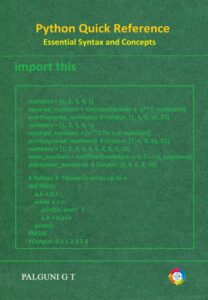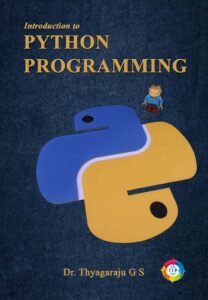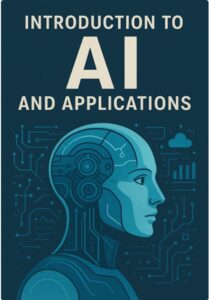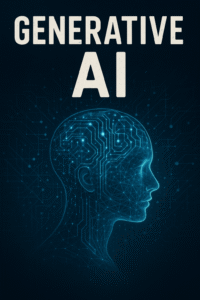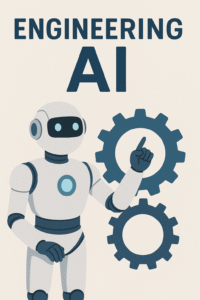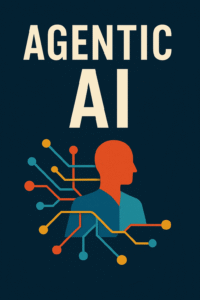Machine learning is a subfield of artificial intelligence (AI) that focuses on the development of algorithms and models that allow computers to learn and make predictions or decisions without being explicitly programmed. It enables machines to analyze and interpret complex data, identify patterns, and make intelligent decisions based on the available information.
Top 10 Definitions of Machine Learning
- “A computer program is said to learn from experience E with respect to some class of tasks T and performance measure P if its performance at tasks in T, as measured by P, improves with experience E.” – Tom Mitchell
- “Machine learning is the field of study that gives computers the ability to learn without being explicitly programmed.” – Arthur Samuel
- “Machine learning is the extraction of knowledge from data based on algorithms that learn patterns or models.” – Pedro Domingos
- “Machine learning algorithms automatically learn to recognize patterns in data, and to make predictions or decisions based on those patterns.” – Ethem Alpaydin
- “Machine learning is the process of automatically learning and improving from data, without being explicitly programmed.” – Andrew Ng
- “Machine learning refers to a set of methods and techniques that allow computers to learn and make predictions or decisions without being explicitly programmed.” – Ian Goodfellow, Yoshua Bengio, and Aaron Courville
- “Machine learning is a scientific discipline that explores the construction and study of algorithms that can learn from and make predictions or take actions based on data.” – Christopher Bishop
- “Machine learning involves the development of algorithms that can learn from and make predictions or decisions based on data.” – Sebastian Raschka and Vahid Mirjalili
- “Machine learning is a field of study that focuses on the development of algorithms that can automatically learn patterns and relationships in data, and make predictions or decisions based on those patterns.” – Kevin P. Murphy
- “Machine learning is a branch of artificial intelligence that focuses on the development of algorithms and models that allow computers to learn and improve from experience, without being explicitly programmed.” – Peter Flach
The field of machine learning seeks to create intelligent systems that can automatically improve their performance over time through experience.
At its core, machine learning involves the construction of mathematical models that learn from data and improve their performance over time. This process involves several key components:
- Data: Machine learning algorithms require large amounts of data to learn from. This data can be in the form of structured data (e.g., tables) or unstructured data (e.g., text, images, audio). The quality and quantity of data play a crucial role in the success of machine learning models.
- Features: Features are specific measurable characteristics or properties of the data that are relevant to the learning task. Identifying and selecting the right features is an important step in machine learning, as they directly impact the model’s ability to make accurate predictions or decisions.
- Model: A model represents the mathematical or computational representation of the relationship between the input data and the desired output. It captures the patterns, correlations, and dependencies in the data. The model is trained using algorithms that optimize its internal parameters based on the available data.
- Training: During the training phase, the model is presented with a labeled dataset, where the input data is paired with the corresponding correct output or target. The model learns from this data by adjusting its internal parameters to minimize the difference between its predicted output and the actual target.
- Validation and Testing: After training, the model needs to be evaluated to assess its performance and generalization ability. This is done using validation and testing datasets that contain new, unseen examples. The model’s performance metrics, such as accuracy or error rates, are calculated to measure its effectiveness.
- Prediction or Decision-making: Once the model is trained and evaluated, it is ready to be deployed and used for making predictions or decisions on new, unseen data. The model takes the input data and applies the learned patterns to generate predictions or outputs.
Machine learning techniques can be broadly categorized into three main types:
- Supervised Learning: In supervised learning, the algorithm is trained on labeled data, where each example has a known input and output. The goal is to learn a mapping function that can predict the output for new, unseen inputs. Common supervised learning algorithms include linear regression, decision trees, and support vector machines.
- Unsupervised Learning: Unsupervised learning deals with unlabeled data. The algorithm aims to find patterns, structures, or relationships within the data without any predefined output. Clustering algorithms, such as K-means clustering, and dimensionality reduction techniques like Principal Component Analysis (PCA) fall under this category.
- Reinforcement Learning: Reinforcement learning involves an agent that interacts with an environment and learns to take actions that maximize a reward signal. The agent learns through trial and error, receiving feedback in the form of rewards or penalties. This type of learning is commonly used in robotics, game playing, and autonomous systems.
- Supervised Learning :
Supervised learning is a machine learning approach where a model is trained using labeled data. In supervised learning, the training data consists of input features and their corresponding output labels. The goal is to learn a mapping function that can predict the correct output label for new, unseen inputs.
Supervised Machine Learning Algorithms can be classified into
1. Classification and 2. Regression
- Classification: Classification is a type of supervised learning that involves predicting a categorical or discrete class label for new, unseen data points based on the patterns observed in the training data. The goal is to assign input data to predefined classes or categories. Here’s an example:
Suppose we have a dataset of emails labeled as “spam” or “not spam” based on their content. We want to build a classifier that can predict whether a new email is spam or not. In this case, we are performing a binary classification task (two classes: “spam” and “not spam”).
Additionally, classification can also involve multi-class scenarios where there are more than two classes. For instance, classifying images of animals into categories like “cat,” “dog,” or “bird” would be a multi-class classification problem.
2. Regression: Regression, on the other hand, deals with predicting continuous or numerical values as the output based on the relationships observed in the training data. It aims to estimate the relationship between the input features and the target variable. Here’s an example:
Let’s say we have a dataset with information about houses, including features like area, number of bedrooms, and location, along with their corresponding sale prices. The goal is to build a regression model that can predict the sale price of a new house based on its features.
In this case, the target variable (sale price) is continuous, and we are performing a regression task to predict a numerical value.
The fundamental difference between classification and regression lies in the nature of the output variable. Classification predicts categorical labels or classes, while regression predicts continuous numerical values.
To summarize:
- Classification: Predicting categorical or discrete class labels.
- Regression: Predicting continuous numerical values.
It’s important to note that while the examples above illustrate binary classification and simple regression tasks, both classification and regression can be applied to more complex scenarios with multiple classes or intricate relationships between variables.
Types of Classification Algorithms:
- Logistic Regression
- Decision Trees
- Random Forest
- Gradient Boosting Trees (e.g., XGBoost, LightGBM)
- Naive Bayes
- Gaussian Naive Bayes
- Bernoulli Naive Bayes
- Support Vector Machines (SVM)
- k-Nearest Neighbors (KNN)
- Neural Networks (MLP, CNN, RNN, LSTM, DBN)
- Bagging (e.g., Voting Classifier, Bagging Classifier)
- Boosting (e.g., AdaBoost, Gradient Boosting)
- Stacking
- Classification and Regression Tree (CART)
- Ripper
- Ordinal Logistic Regression
Types of Regression Algorithms:
- Linear Regression
- Decision Trees
- Random Forest
- Gradient Boosting Trees (e.g., XGBoost, LightGBM)
- Support Vector Machines (SVM)
- k-Nearest Neighbors (KNN)
- Neural Networks (MLP, CNN, RNN, LSTM, DBN)
- Bagging (e.g., Voting Regressor, Bagging Regressor)
- Boosting (e.g., AdaBoost, Gradient Boosting)
- Stacking
- Classification and Regression Tree (CART)
- Ripper
Note that some algorithms, such as decision trees, random forest, and gradient boosting, can be used for both classification and regression tasks, depending on the nature of the target variable. Additionally, the neural network models mentioned can be used for both classification and regression tasks, depending on the type of output layer and loss function used.
2. Unsupervised Machine Learning
Unsupervised machine learning is a branch of machine learning where algorithms are used to discover patterns, relationships, or structures in data without the need for labeled or pre-classified examples. Unlike supervised learning, where algorithms are trained using labeled data to make predictions, unsupervised learning explores the inherent structure and characteristics of data to gain insights and make discoveries. The goal is to uncover hidden patterns or groupings within the data without any prior knowledge or guidance.
Examples of Unsupervised Machine Learning:
- Clustering: Clustering is a common technique in unsupervised learning, where data points are grouped together based on their similarities or proximity in the feature space. The algorithm automatically identifies clusters or groups within the data without any prior information about the categories. For instance, in customer segmentation, clustering algorithms can group customers based on their purchasing behaviors, enabling businesses to tailor marketing strategies to different customer segments.
- Anomaly Detection: Anomaly detection is another application of unsupervised learning, which focuses on identifying rare or abnormal instances in a dataset. This technique is particularly useful in detecting fraudulent transactions, network intrusions, or unusual patterns in medical data. Unsupervised algorithms learn the normal behavior of the data and flag instances that deviate significantly from the learned patterns as potential anomalies.
- Dimensionality Reduction: Dimensionality reduction aims to reduce the number of variables or features in a dataset while retaining as much relevant information as possible. Techniques like Principal Component Analysis (PCA) and t-SNE (t-distributed Stochastic Neighbor Embedding) are commonly used in unsupervised learning to transform high-dimensional data into a lower-dimensional space. This can help visualize and understand complex data or facilitate more efficient processing for downstream tasks.
- Association Rule Mining: Association rule mining is a technique used to identify relationships or associations among items in a dataset. It is often applied in market basket analysis, where the goal is to discover frequently occurring item combinations in transaction data. For example, in a retail setting, unsupervised algorithms can identify that customers who buy diapers often also purchase baby formula, leading to insights on product placement and cross-selling strategies.
- Generative Models: Generative models in unsupervised learning aim to learn the underlying distribution of the data and generate new samples that resemble the original data distribution. Variational Autoencoders (VAEs) and Generative Adversarial Networks (GANs) are popular generative models. These models can be used for tasks such as image generation, text generation, or data augmentation, where synthetic data is generated to supplement limited or unbalanced datasets.
In summary, unsupervised machine learning techniques allow us to explore and uncover patterns, relationships, and structures within data without the need for predefined labels or guidance. Clustering, anomaly detection, dimensionality reduction, association rule mining, and generative models are just a few examples of the diverse applications of unsupervised learning, providing valuable insights and facilitating decision-making in various domains.
Clustering Algorithms :
There are several clustering algorithms available in the field of machine learning and data analysis. Here is a list of some commonly used clustering algorithms:
- K-Means: K-Means is one of the most popular clustering algorithms. It partitions the data into K clusters by minimizing the sum of squared distances between data points and the centroid of each cluster. It works well when the clusters are well-separated and of similar sizes.
- Hierarchical Clustering: Hierarchical clustering builds a hierarchy of clusters by either merging clusters or dividing data points into smaller clusters. It can be agglomerative (bottom-up) or divisive (top-down). The result is typically visualized using a dendrogram.
- DBSCAN (Density-Based Spatial Clustering of Applications with Noise): DBSCAN groups data points based on density. It identifies core points, which have a sufficient number of neighboring points, and expands clusters from these core points. It is robust to noise and can discover clusters of arbitrary shapes.
- Mean Shift: Mean Shift is a non-parametric algorithm that finds clusters by shifting points towards the mode of the data density. It iteratively updates the center of each cluster until convergence. It can identify clusters of different shapes and sizes.
- Gaussian Mixture Models (GMM): GMM assumes that the data points are generated from a mixture of Gaussian distributions. It models the data as a combination of multiple Gaussian components and estimates the parameters using the Expectation-Maximization (EM) algorithm. It can assign probabilities of data points belonging to each cluster.
- Spectral Clustering: Spectral clustering converts the data into a graph representation and performs clustering based on the graph’s eigenvalues and eigenvectors. It uses techniques from linear algebra to find clusters. It can handle complex structures and is suitable for image segmentation and graph clustering.
- OPTICS (Ordering Points to Identify Clustering Structure): OPTICS is a density-based clustering algorithm that creates a reachability plot to determine the density-connected points in the data. It can identify clusters of varying densities and handle noise.
- Agglomerative Clustering: Agglomerative clustering starts with each data point as a separate cluster and iteratively merges the closest pairs of clusters until a stopping criterion is met. It creates a hierarchy of clusters, which can be visualized using a dendrogram.
- Affinity Propagation: Affinity Propagation uses message-passing between data points to find exemplars that represent clusters. It iteratively updates the availability and responsibility matrices to determine the most representative data points.
- Fuzzy C-Means: Fuzzy C-Means assigns each data point a membership value to multiple clusters, indicating the degree of belongingness. It allows data points to belong to multiple clusters simultaneously, with different degrees of membership.
These are just a few examples of clustering algorithms, each with its strengths, limitations, and suitable use cases. The choice of clustering algorithm depends on the nature of the data, the desired output, and the specific problem at hand.
Anomaly Detection
Anomaly detection algorithms are used to identify unusual or anomalous patterns or data points that deviate significantly from the norm. Here is a list of some commonly used anomaly detection algorithms:
- Statistical Methods:
- Z-Score: Calculates the number of standard deviations a data point is away from the mean.
- Modified Z-Score: Similar to Z-Score but uses median and median absolute deviation.
- Gaussian Mixture Models (GMM): Models data as a combination of Gaussian distributions and identifies anomalies as low-probability events.
- Mahalanobis Distance: Measures the distance of a data point from the centroid of the dataset, accounting for covariance among variables.
- Density-Based Methods:
- Local Outlier Factor (LOF): Measures the local density deviation of a data point with respect to its neighbors. Outliers have a significantly lower density than their neighbors.
- DBSCAN (Density-Based Spatial Clustering of Applications with Noise): Clusters data points based on density, and outliers are considered points that do not belong to any cluster.
- Isolation Forest: Randomly splits data points and isolates anomalies that require fewer splits. Anomalies are isolated more quickly compared to normal data points.
- Distance-Based Methods:
- K-Nearest Neighbors (KNN): Measures the distance to the k nearest neighbors and flags data points with large distances as anomalies.
- Local Outlier Probability (LoOP): Computes the local density of a data point and its neighbors and estimates the probability of a point being an outlier based on its neighbors’ behavior.
- Distance-based Outlier Detection (LOCI): Measures the ratio of the average distance to the k nearest neighbors and the average distance to the points beyond k nearest neighbors.
- Machine Learning-Based Methods:
- Support Vector Machines (SVM): Constructs a hyperplane to separate data points into different classes. Outliers are considered data points that are difficult to fit within the model.
- Random Forests: Uses an ensemble of decision trees to identify anomalies. Anomalies are classified based on the observations made by multiple trees.
- Neural Networks: Trains a neural network to reconstruct normal data. Anomalies are identified based on the reconstruction error, with larger errors indicating abnormal patterns.
- Clustering-Based Methods:
- K-Means Clustering: Assigns data points to clusters, and data points that do not belong to any cluster or have a large distance from cluster centers are considered anomalies.
- DBSCAN: Labels data points that are not part of any cluster as anomalies.
- Autoencoders: Unsupervised neural networks that learn to reconstruct input data. Anomalies are identified based on the discrepancy between the input and reconstructed output.
These are just a few examples of anomaly detection algorithms, each with its own assumptions, strengths, and limitations. The choice of algorithm depends on the nature of the data, the type of anomalies being targeted, and the specific requirements of the application. It is often necessary to experiment with different algorithms or combine multiple techniques to achieve accurate anomaly detection in real-world scenarios.
Dimensionality Reduction
Dimensionality reduction refers to the process of reducing the number of features or variables in a dataset while preserving as much relevant information as possible. It is commonly used in data preprocessing and analysis to handle high-dimensional data, remove redundant or irrelevant features, and improve computational efficiency. Dimensionality reduction techniques aim to transform the data into a lower-dimensional space while retaining its important characteristics.
Here is a list of some commonly used dimensionality reduction algorithms:
- Principal Component Analysis (PCA):
- PCA is a widely used linear dimensionality reduction technique.
- It transforms the data into a new set of uncorrelated variables called principal components.
- The principal components capture the maximum variance in the data.
- PCA can be applied to both numerical and categorical data.
- Linear Discriminant Analysis (LDA):
- LDA is a supervised dimensionality reduction technique commonly used in classification problems.
- It finds a linear combination of features that maximizes the separation between classes while minimizing the variance within each class.
- LDA aims to find discriminant axes that best represent the class separability.
- t-distributed Stochastic Neighbor Embedding (t-SNE):
- t-SNE is a nonlinear dimensionality reduction technique commonly used for visualization purposes.
- It aims to preserve the local structure of the data by modeling pairwise similarities between data points.
- t-SNE is effective in revealing clusters and patterns in high-dimensional data.
- Isomap (Isometric Mapping):
- Isomap is a nonlinear dimensionality reduction technique that preserves the global structure of the data.
- It constructs a low-dimensional embedding by modeling the geodesic distances between data points on a manifold.
- Isomap is particularly useful for datasets with nonlinear relationships or when preserving the data’s intrinsic geometry is important.
- Locally Linear Embedding (LLE):
- LLE is a nonlinear dimensionality reduction technique that preserves the local structure of the data.
- It aims to find a low-dimensional representation in which neighboring points are well-preserved.
- LLE reconstructs each data point as a linear combination of its neighbors and seeks a lower-dimensional representation that best approximates the relationships.
- Non-Negative Matrix Factorization (NMF):
- NMF is a dimensionality reduction technique that factors a non-negative data matrix into two non-negative matrices.
- It aims to find a parts-based representation of the data, where each feature can be expressed as a non-negative linear combination of basis vectors.
- NMF is often used in applications such as image processing and text mining.
- Random Projection:
- Random Projection is a technique that maps high-dimensional data onto a lower-dimensional space using random projection matrices.
- It approximates the pairwise distances between data points in the high-dimensional space with a low-dimensional projection.
- Random Projection can be computationally efficient for large-scale datasets.
- Autoencoders:
- Autoencoders are neural networks designed to reconstruct their input data.
- By training an autoencoder to reconstruct the input, the network learns a compressed representation of the data in the bottleneck layer.
- The bottleneck layer serves as a lower-dimensional representation of the input data.
These are some popular dimensionality reduction algorithms, each with its own assumptions and characteristics. The choice of algorithm depends on the specific requirements of the data, the desired outcome, and the nature of the underlying relationships within the dataset.
Association Rule Mining:
Generative Models
3. Semi Supervised Machine Learning
4. Reinforcement Machine Learning
In the context of machine learning, the relationship between a computer system and its learning capabilities can be defined in terms of the Task (T), Performance (P), and Experience (E) framework:
- Task (T): The task refers to the specific problem or objective that the computer system aims to accomplish or solve. It defines the type of output or prediction the system needs to generate based on the input data. Examples of tasks include image classification, speech recognition, spam detection, or recommendation systems.
- Performance (P): Performance measures how well the computer system performs the task T. It typically involves evaluating the accuracy, efficiency, or effectiveness of the system’s predictions or decisions. The performance can be measured using various metrics, such as accuracy, precision, recall, F1-score, mean squared error, or area under the curve, depending on the nature of the task.
- Experience (E): Experience refers to the data or examples that the computer system learns from. It encompasses the input data, usually represented as feature vectors, along with the corresponding target labels or desired outputs for supervised learning tasks. The system leverages this experience to generalize patterns, extract knowledge, and improve its performance on new, unseen data.
The machine learning process involves using experience E to improve the system’s performance P on the given task T. By iteratively exposing the system to more diverse and representative data, it can learn from its experiences and enhance its ability to perform the task more accurately or efficiently.
The aim of machine learning algorithms is to find the optimal relationship between T, P, and E, allowing the system to achieve high performance on the task by leveraging relevant and informative experiences. The choice of learning algorithm, feature engineering, and model selection depends on the specific task, available data, and desired performance objectives.
Machine learning has a wide range of applications across various domains, including image and speech recognition, natural language processing, recommendation systems, fraud detection, healthcare, finance, and many more. As the availability of data continues to grow and computing power advances, machine learning continues to make significant contributions in solving complex problems and driving advancements in AI.
Machine Learning Glossary
- Accuracy: A performance metric that measures the proportion of correct predictions made by a machine learning model.
- Activation Function: A mathematical function applied to the output of a neuron or node in a neural network, introducing non-linearity and enabling the network to learn complex relationships.
- AdaBoost: An ensemble learning algorithm that combines weak learners (typically decision trees) to create a strong predictive model by assigning higher weights to misclassified instances.
- Algorithm: A step-by-step procedure or set of rules followed to solve a specific problem or perform a specific task.
- Artificial Intelligence (AI): The broad field of computer science that encompasses the development of intelligent machines capable of performing tasks that typically require human intelligence.
- Autoencoder: A type of neural network used for unsupervised learning, trained to reconstruct the input data by learning efficient data encodings.
- Activation: The output value of a neuron or node in a neural network after applying the activation function to the weighted sum of its inputs.
- Adaptive Learning Rate: A technique where the learning rate of the optimization algorithm is adjusted dynamically during training, allowing for faster convergence and improved performance.
- Anomaly Detection: A technique used to identify rare or abnormal instances in a dataset that deviate significantly from the norm or expected behavior.
- Backpropagation: A widely used algorithm for training neural networks, where errors are propagated backward from the output layer to the input layer to adjust the model’s weights.
- Batch Size: The number of training examples used in a single iteration or update of the model’s parameters during the training phase.
- Bias-Variance Tradeoff: The tradeoff between a model’s ability to fit the training data well (low bias) and its ability to generalize to unseen data (low variance).
- Bagging: A technique in ensemble learning where multiple models are trained on different subsets of the training data, and their predictions are combined to make a final decision.
- Bayesian Inference: A statistical approach that uses Bayes’ theorem to update the probability of a hypothesis as new evidence or data becomes available.
- Bias: The error introduced by a machine learning model’s assumptions or simplifications, leading to consistently inaccurate predictions.
- Big Data: Extremely large and complex datasets that cannot be easily managed, processed, or analyzed using traditional data processing techniques.
- Categorical Data: Data that represents discrete categories or labels, such as colors, types of objects, or classes in classification problems.
- Clustering: A technique used in unsupervised learning to group similar data points together based on their intrinsic characteristics or proximity.
- Convolutional Neural Network (CNN): A specialized type of neural network designed for image processing and pattern recognition tasks, leveraging convolutional layers to extract meaningful features.
- Cross-Validation: A technique used to assess the performance and generalization ability of a machine learning model by splitting the dataset into multiple subsets for training and evaluation.
- Decision Tree: A flowchart-like structure used for classification and regression tasks, where internal nodes represent features, branches represent decisions, and leaves represent predictions or outcomes.
- Deep Learning: A subfield of machine learning that focuses on neural networks with multiple layers, enabling them to learn hierarchical representations of data.
- Dimensionality Reduction: Techniques used to reduce the number of input features or dimensions while preserving the most important information, often applied to high-dimensional data.
- Data Augmentation: Techniques used to artificially increase the size and diversity of the training data by applying transformations, such as rotation, flipping, or adding noise, while preserving the labels or desired outputs.
- Dropout: A regularization technique commonly used in neural networks, randomly dropping out a fraction of the neurons during training to reduce overfitting and improve generalization.
- Ensemble Learning: The technique of combining multiple machine learning models (ensemble) to improve overall performance and reduce bias or variance.
- Early Stopping: A technique used to prevent overfitting by stopping the training process early when the model’s performance on a validation set starts to deteriorate.
- Epoch: One complete pass through the entire training dataset during the training phase of a machine learning model.
- Exploratory Data Analysis (EDA): The process of analyzing and visualizing the characteristics, patterns, and relationships in a dataset to gain insights and understand the data better before applying machine learning techniques.
- Feature Engineering: The process of selecting, transforming, or creating relevant features from the raw data to improve the performance of a machine learning model.
- Feedforward Neural Network: A type of neural network where information flows in a single direction, from the input layer through one or more hidden layers to the output layer.
- F1 Score: A performance metric that combines precision and recall to provide a single measure of a model’s accuracy, particularly useful in imbalanced classification problems.
- Feature Extraction: The process of automatically identifying and selecting the most informative or relevant features from raw data, often using techniques like dimensionality reduction or domain-specific knowledge.
- Fine-tuning: The process of taking a pre-trained model and further training it on a new dataset or task to adapt and refine its parameters for the specific problem at hand.
- Frequent Pattern Mining: A data mining technique that aims to discover frequently occurring patterns or associations in a dataset, often used in market basket analysis or recommendation systems.
- Generalization: The ability of a machine learning model to perform accurately on unseen data that was not used during the training phase.
- Generative Adversarial Network (GAN): A type of neural network consisting of a generator and discriminator, where the generator learns to generate synthetic data that resembles real data, and the discriminator learns to distinguish between real and generated data.
- Gradient Descent: An optimization algorithm used to iteratively update the parameters of a model by moving in the direction of steepest descent of the loss function, aiming to find the optimal set of parameters.
- Gaussian Mixture Model (GMM): A probabilistic model that represents the distribution of data points as a mixture of Gaussian distributions, commonly used for clustering and density estimation.
- Grid Search: A technique used to systematically search through a predefined set of hyperparameter combinations to find the optimal configuration that maximizes the model’s performance.
- Hyperparameter: A parameter that is not learned by the machine learning model itself but set by the user before training, affecting the behavior and performance of the model, such as learning rate, regularization strength, or number of hidden layers.
- Heteroscedasticity: A phenomenon in regression analysis where the variability of the error terms or residuals differs across the range of predictor variables.
- Imbalanced Dataset: A dataset where the number of instances or samples in different classes or categories is significantly skewed, which can pose challenges for machine learning algorithms to learn effectively.
- Inference: The process of using a trained machine learning model to make predictions or decisions on new, unseen data.
- Inference Time: The time it takes for a trained machine learning model to generate predictions or decisions on new, unseen data.
- K-Means Clustering: A popular unsupervised learning algorithm that partitions data points into K clusters based on their similarity, where K is a predefined number chosen by the user.
- Kernel: In machine learning, a kernel is a function used to measure the similarity or distance between data points in various algorithms, such as Support Vector Machines (SVM) or kernelized clustering algorithms.
- K-Nearest Neighbors (KNN): A simple yet effective machine learning algorithm used for classification or regression, where the prediction is based on the majority vote or average of the K nearest neighbors in the feature space.
- Label: In supervised learning, a label refers to the known or desired output associated with a specific input data point, used for training the model.
- Learning Rate: A hyperparameter that determines the step size or rate at which a model’s parameters are updated during training using an optimization algorithm like gradient descent.
- Logistic Regression: A popular supervised learning algorithm used for binary classification, where the output is a probability estimate between 0 and 1, often used in situations where the dependent variable is categorical.
- Loss Function: A mathematical function that measures the discrepancy or error between the predicted output of a model and the true output, used to guide the optimization process during training.
- L1 Regularization (Lasso): A regularization technique that adds the sum of the absolute values of the model’s parameters to the loss function, promoting sparsity and feature selection.
- L2 Regularization (Ridge): A regularization technique that adds the sum of the squared values of the model’s parameters to the loss function, encouraging small parameter values and reducing overfitting.
- Latent Variable: An underlying or unobserved variable that cannot be directly measured but affects the observed data, often used in models like Latent Dirichlet Allocation (LDA) or factor analysis.
- Mean Squared Error (MSE): A common loss function used in regression tasks, measuring the average squared difference between the predicted and actual values.
- Mean Absolute Error (MAE): A loss function commonly used in regression tasks, measuring the average absolute difference between the predicted and actual values.
- Multiclass Classification: A classification task where the goal is to assign instances to one of multiple classes or categories.
- Multilabel Classification: A classification task where each instance can be assigned to multiple classes simultaneously, allowing for more than one positive label per instance.
- Naive Bayes: A probabilistic classifier based on Bayes’ theorem, assuming that the presence of a feature is independent of the presence of other features, often used in text classification and spam filtering.
- Neural Network: A computational model inspired by the structure and functioning of biological neural networks, consisting of interconnected nodes or neurons organized in layers.
- N-gram: A contiguous sequence of N items or words in a text, commonly used in natural language processing (NLP) for tasks like language modeling or text generation
- Overfitting: When a machine learning model performs well on the training data but fails to generalize to new, unseen data due to capturing noise or irrelevant patterns.
- One-Hot Encoding: A technique used to represent categorical variables as binary vectors, where each category is encoded as a binary value (0 or 1), creating a sparse representation of the data.
- Outlier Detection: The process of identifying and handling data points or instances that deviate significantly from the majority of the data, often indicating errors, anomalies, or rare events.
- Precision: A performance metric that measures the proportion of correctly predicted positive instances out of the total predicted positive instances, providing an assessment of a model’s accuracy on positive predictions.
- Principal Component Analysis (PCA): A dimensionality reduction technique that transforms high-dimensional data into a lower-dimensional representation while preserving the most important information and minimizing information loss.
- Perceptron: A simple binary classifier and the building block of neural networks, computing a weighted sum of inputs and applying a step function to produce a binary output.
- Precision-Recall Curve: A graphical representation of the tradeoff between precision and recall for different classification thresholds, providing insights into a model’s performance across different operating points.
- Random Forest: An ensemble learning method that combines multiple decision trees to make predictions or classifications, reducing overfitting and improving robustness.
- Ranking: A machine learning task that involves ordering or ranking a set of items based on their relevance or preference, often used in search engines, recommendation systems, and information retrieval.
- Recall: A performance metric that measures the proportion of correctly predicted positive instances out of the total actual positive instances, providing an assessment of a model’s ability to identify all positive instances.
- Recurrent Neural Network (RNN): A type of neural network designed to process sequential data by maintaining an internal memory or hidden state, making it suitable for tasks like natural language processing or time series analysis.
- Regularization: A technique used to prevent overfitting by adding a penalty term to the loss function, encouraging the model to learn simpler and more generalizable representations.
- Reinforcement Learning: A type of machine learning where an agent learns to make sequential decisions and take actions in an environment to maximize a reward signal through trial and error.
- Regression: A type of supervised learning task where the goal is to predict a continuous numerical value, such as predicting house prices or stock prices.
- Resampling: Techniques used to manipulate the training data to address class imbalance, such as oversampling the minority class, undersampling the majority class, or generating synthetic samples.
- Root Mean Squared Error (RMSE): A performance metric commonly used in regression tasks, measuring the square root of the average squared difference between the predicted and actual values.
- Sampling: The process of selecting a subset or representative examples from a larger dataset, often used to reduce computational complexity, address class imbalance, or perform exploratory analysis.
- Self-Supervised Learning: A type of learning paradigm where a model is trained on an auxiliary or pretext task using unlabeled data, and then the learned representations are transferred to downstream tasks.
- Sigmoidal Neuron: A type of artificial neuron with a sigmoid activation function, commonly used in the output layer of binary classification models.
- Singular Value Decomposition (SVD): A matrix factorization technique that decomposes a matrix into three matrices, used for dimensionality reduction, data compression, and collaborative filtering.
- Semi-Supervised Learning: A learning paradigm where the machine learning model is trained on a combination of labeled and unlabeled data, leveraging the unlabeled data to improve performance.
- Sequence-to-Sequence (Seq2Seq): A type of model architecture in deep learning that aims to transform an input sequence into an output sequence, commonly used in tasks like machine translation or chatbot responses.
- Sigmoid Function: A popular activation function used in neural networks, producing an S-shaped curve and mapping the input to a range between 0 and 1.
- Support Vector Machine (SVM): A supervised learning algorithm used for classification and regression tasks, constructing hyperplanes or decision boundaries to separate data points into different classes.
- Supervised Learning: A machine learning task where the model learns from labeled data, consisting of input-output pairs, and aims to predict the output for new, unseen inputs.
- Turing Test: A test proposed by Alan Turing to determine a machine’s ability to exhibit intelligent behavior indistinguishable from that of a human.
- Transfer Learning: A technique where knowledge or representations learned from one task or domain are transferred and applied to a different but related task or domain, often leveraging pre-trained models.
- Time Series Analysis: The process of analyzing and modeling data that is ordered or indexed by time, often used in forecasting, trend analysis, and anomaly detection.
- Underfitting: When a machine learning model is too simple or lacks the capacity to capture the underlying patterns in the data, resulting in poor performance on both training and unseen data.
- Unsupervised Learning: A type of machine learning where the algorithm learns patterns, structures, or relationships in unlabeled data without predefined output labels.
- Unsupervised Feature Learning: The process of automatically learning informative features or representations from unlabeled data, without explicit supervision or predefined labels.
- Validation Set: A subset of the training data used to fine-tune the model’s hyperparameters and assess its generalization ability, separate from the training and testing sets.
- Variance: The sensitivity of a machine learning model to fluctuations in the training data, resulting in inconsistent predictions.
- Word Embedding: A technique that represents words or text data as dense, low-dimensional vectors, capturing semantic relationships and allowing machines to process and understand language more effectively.
- XGBoost: An optimized implementation of gradient boosting, a popular machine learning algorithm known for its high performance and flexibility, particularly in structured data problems.
- Zero-Shot Learning: A type of machine learning where the model can generalize to unseen classes or categories during inference, without explicit training on those classes.
- Activation: The output value of a neuron or node in a neural network after applying the activation function to the weighted sum of its inputs.
- Adaptive Learning Rate: A technique where the learning rate of the optimization algorithm is adjusted dynamically during training, allowing for faster convergence and improved performance.
- Anomaly Detection: A technique used to identify rare or abnormal instances in a dataset that deviate significantly from the norm or expected behavior.

